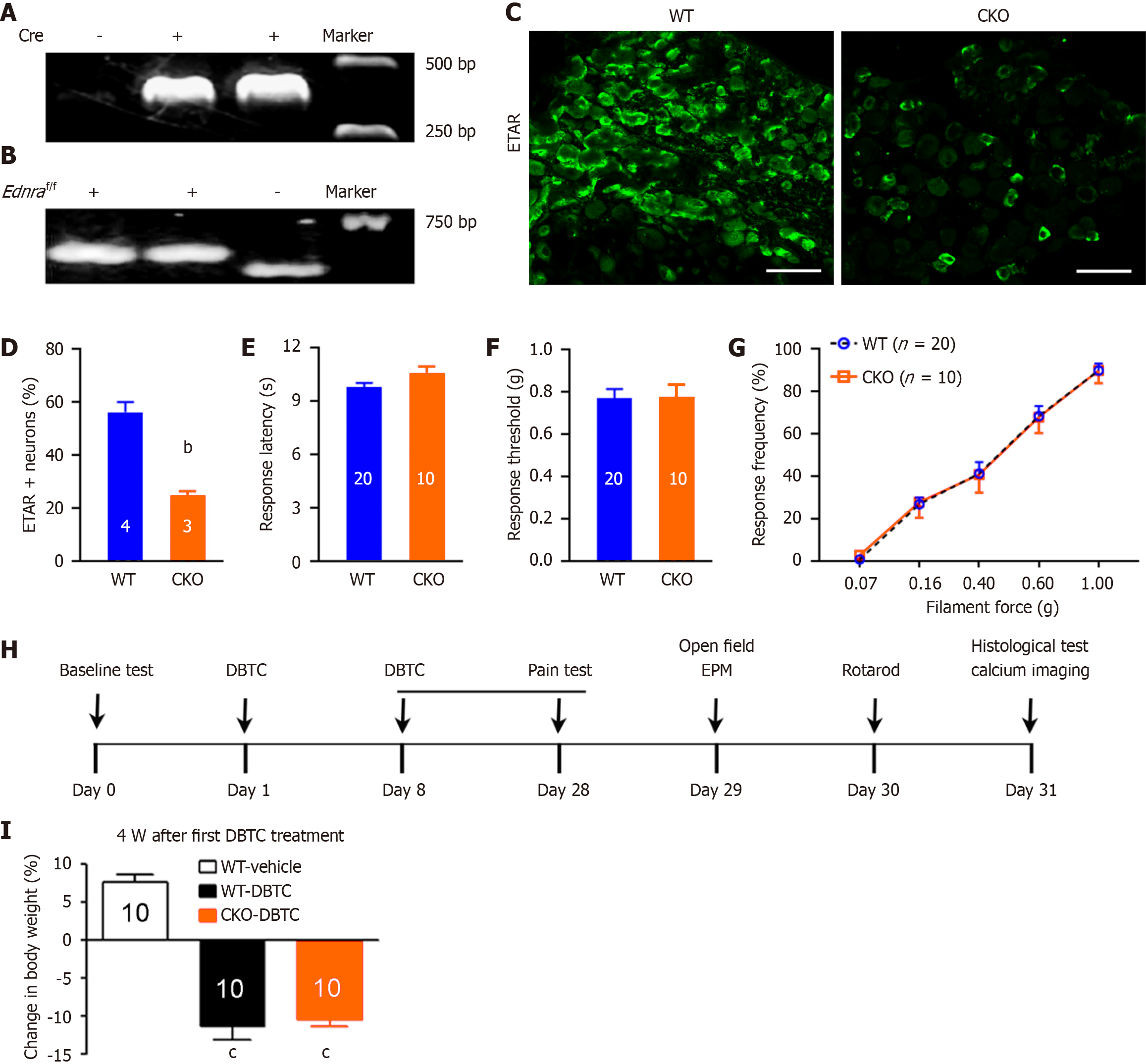Copyright
©The Author(s) 2025.
World J Gastroenterol. Jun 21, 2025; 31(23): 103848
Published online Jun 21, 2025. doi: 10.3748/wjg.v31.i23.103848
Published online Jun 21, 2025. doi: 10.3748/wjg.v31.i23.103848
Figure 1 Characterization of endothelin A receptor conditional knockout mouse line.
A: Polymerase chain reaction genotyping of SNS-Cre mice (Cre band: Approximately 350 bp); B Polymerase chain reaction genotyping of endothelin A receptor (ETAR)-flox mice (with flox band: Approximately 650 bp; without flox band: Approximately 610 bp); C: Representative immunofluorescence images showing ETAR (green) signals in dorsal root ganglion neurons from ETAR conditional knockout (CKO) and littermate wild type (WT) mice; D: Analysis of ETAR-positive dorsal root ganglion neuron percentage in WT and CKO mice; E: Radiant heat test was used to examine thermal nociceptive response latency in WT and ETAR CKO mice; F: Response threshold to abdominal mechanical stimulation was measured in WT and ETAR CKO mice with von Frey filaments; G: Von Frey filaments with different forces were applied to the abdomen of WT and ETAR CKO mice. The response frequency of each filament was calculated; H: The experimental flowchart; I: The percentage of body weight change of experimental mice around 4 weeks after with dibutyltin dichloride or vehicle treatment. Scale bar, 50 μm. n = 3-20 mice. Data are shown as mean ± SEM. bP < 0.01, cP < 0.001, statistical comparisons were conducted with unpaired two-tailed t-test (D-F), two-way analysis of variance (G) or one-way analysis of variance with Sidak’s post hoc test (I). Ednra: Endothelin receptor type A gene; WT: Wild type; CKO: Conditional knockout; ETAR: Endothelin A type receptor; DBTC: Dibutyltin dichloride; EPM: Elevated plus maze.
- Citation: Wang B, Ge JY, Wu JN, Xu JH, Cao XH, Chang N, Zhou X, Jing PB, Liu XJ, Wu Y. Endothelin A receptor in nociceptors is essential for persistent mechanical pain in a chronic pancreatitis of mouse model. World J Gastroenterol 2025; 31(23): 103848
- URL: https://www.wjgnet.com/1007-9327/full/v31/i23/103848.htm
- DOI: https://dx.doi.org/10.3748/wjg.v31.i23.103848









